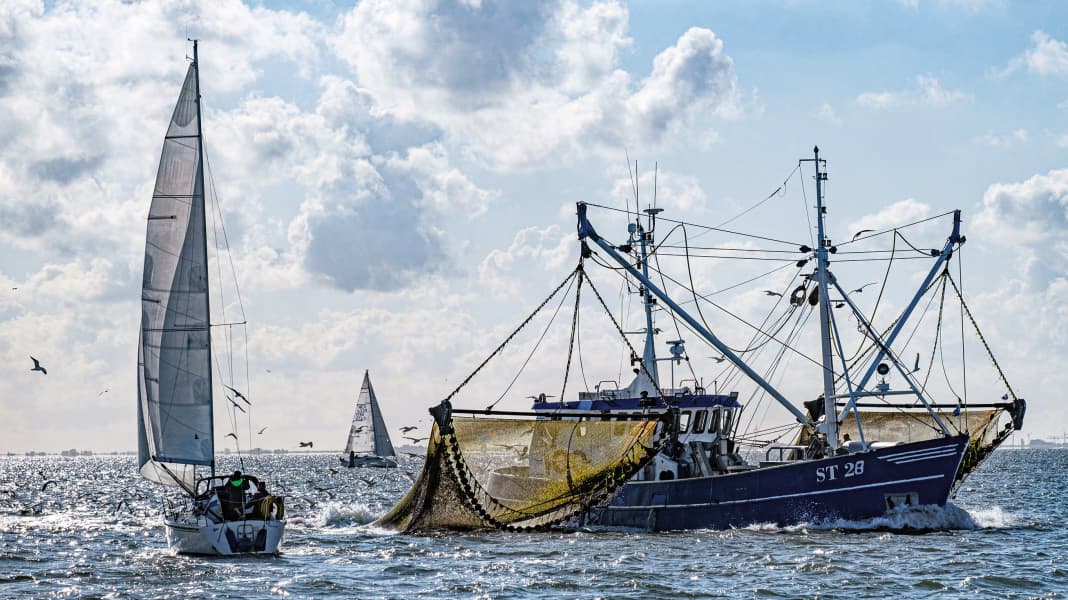
In this particular case, a sailing yacht collided with a fishing boat in the summer of 2021, which was fishing two and a half miles off the coast in the Baltic Sea near Schleimünde. According to the fisherman, he had laid out 17 nets over a total length of around one kilometre, each 60 metres long, and marked them with flags. The sailor rammed the fishing boat on the starboard side, causing property damage of over 17,000 euros.
No hourglass set
The two parties are arguing about the exact circumstances of the accident. What is certain, however, is that the fisherman had not set his cone, the so-called hourglass prescribed in the collision prevention regulations, while fishing. It is also clear that a fisherman is only privileged - i.e. does not have to avoid a sailor - if he is actually fishing. Otherwise, it counts as a normal motorised boat and would then also have to give way to a sailing boat that does not have an engine running.
The court ruled in favour of the defendant yachtsman on the grounds that: "The plaintiff has not provided evidence to convince the court that he is to be regarded as a fishing vessel."
Judgement raises questions
At the same time, however, the court also stated in passing that the question of whether a fisherman is fulfilling his task or is travelling as a motorboat is generally "not solely dependent on the setting of the hourglass". Rather, "other signs of evidence" such as "a slow speed" or "activities on board that indicate fishing" also clearly indicate this.
According to the court, a daylight sign is therefore not a mandatory requirement for fishermen to have right of way when a yachtsman is approaching.
The judgement does not reflect the reality of life on the water"
Lawyer Jochen-P. Kunze, who represented the sailor and specialises in yacht commercial law, speaks of a "misjudgement" despite the success in court: "The court's view does not reflect the reality of life on the water," says Kunze: "At sea, only under optimal conditions is there anything recognisable at all that gives an indication of fishing activity." Uncertainty therefore usually remains.
However, the question of the right of way should not depend on chance or visibility. The accident shows that even during the day, the view of what is happening on board another boat can be "completely obstructed" by the bow, the sail or the wheelhouse. This is precisely why the legislator decided in favour of clear visual signs, says Kunze, because they create clarity: "I believe that seeing this safety purpose as obsolete is a dangerous misinterpretation," he comments on the court's ruling.
Beware of fishermen
If a fisherman comes into view, special care must always be taken. Sometimes they are alone on board, sometimes the technology goes on strike, or the skipper is too busy to keep a good lookout.
